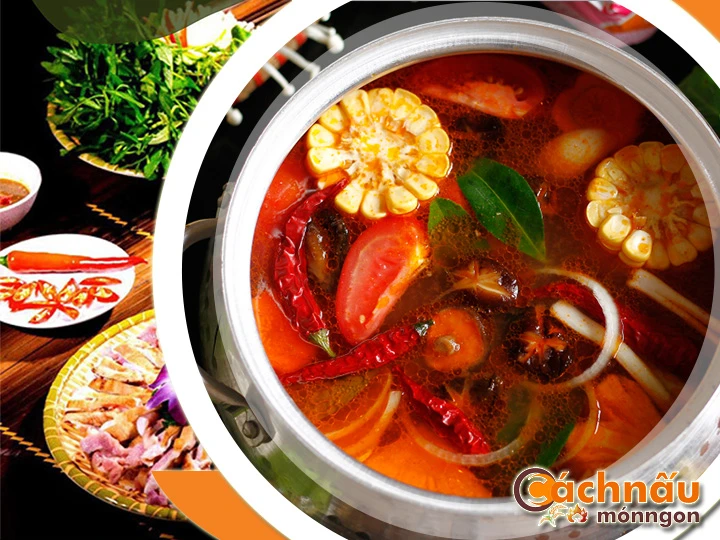This comprehensive guide explores the complete picture you need to realize about rabbit hot pot, from its ancient origins to modern variations, wellness benefits, and cooking directions for creating the ultimate plate at home. Whether you are a seasoned chef or a inquisitive newcomer, this guide will motivate and prepare you to refine your talent of rabbit hot pot.

EXPLORING THE PAST AND CULTURE REGARDING RABBIT CUISINE.
Rabbit hot pot is a unique and classic dish with deep cultural roots in multiple countries. Its demand stems not only from its rich flavor but also from its past and cultural importance.
1. Diving into the Beginnings concerning Rabbit stew.
- Early Beginnings: Braised bunny dish was first made in agricultural regions where small game were a accessible, sustaining food source. In historical China, it was a traditional treat, particularly during cultural gatherings.
- Adopted in Various Places: In European nations like the UK, rabbit was frequently added to savory recipes, evolving into modern versions of rabbit casserole as the dish rose in worldwide popularity.
2. Braised Bunny Dish within Eastern Heritage.
- Across China: Known as the famous rabbit hot pot, rabbit hot pot is a staple of the Sichuan region, recognized for its spicy flavors and commonly shared during festive occasions.
- Korea and Japan: While not widely found, rabbit hot pot is rarely created as a therapeutic meal in the Korean Peninsula, or drawing influence from nabemono hot pot in Japan, combined with local vegetables and flavoring ingredients.
- In Vietnam: Although rabbit hot pot is not typically eaten every day, it is famous during festive events or in agricultural communities where rabbit meat is accessible. It is often flavored by distinctive spices such as citronella, ginger, and hot chili, paired with fresh vegetables like kangkong, mustard leaves, or water mimosa. This dish is adored for its exceptional taste and nutritional richness, frequently served at special moments with close ones.
Tại đất nước Việt Nam, tuy không thường xuyên là món ăn phổ biến liên tục mỗi ngày, nhưng thường thấy trong những ngày quan trọng hoặc ở các vùng quê, nơi có thịt thỏ dồi dào. Thường được nấu cùng hương liệu như sả, thơm gừng, và ớt, kết hợp với rau muống. Món ăn này rất được ưa chuộng nhờ hương vị không trộn lẫn và giá trị dinh dưỡng cao, thường là món ăn chính trong.
3. Rabbit Hot Pot throughout Western Food Culture.
- France: Widely known as a flavorful dish with red wine sauce, fresh rosemary and other herbs, and root vegetables. Rabbit hot pot is a classic dish for special celebrations.
- In Italy: The dish “Cacciatore”, featuring rabbit cooked with tomatoes and wine, is a foundation for hot pot recipes with rabbit.
MASTERING RABBIT HOT POT: RECIPES AND METHODS
Rabbit hot pot is a versatile dish that combines seasonal ingredients, savory broths, and specialized methods to create a hearty and flavorful experience. Below are key steps into the primary methods and techniques to master rabbit hot pot.
Essential Recipe for Rabbit Hot Pot
* Ingredients:
- 1 whole rabbit (sectioned)
- 4 cups of broth (vegetable)
- Vegetables (bok choy)
- Spices and herbs (ginger)
- Seasonings (salt)
- Optional: side dishes for serving
* Steps:
- Prepare Your Meat: Rinse and section the rabbit into pieces. Season with a pinch of salt, pepper, and a splash of soy sauce for half an hour to enrich the flavor.
- Make the Broth: Heat a vessel with a bit of oil. Fry minced garlic and sliced ginger until golden. Add your choice of broth and bring it to a simmer.
- Simmer the Rabbit: Add the rabbit pieces into the pot and let them cook slowly on a low flame for 30-40 minutes until soft.
- Add Vegetables: Add your selected vegetables and cook until they are softened but still bright.
- Present: Transfer the hot pot to a serving dish. Serve with accompaniments and extras like rice or noodles.
Key Techniques for Cooking Rabbit Hot Pot
- Marination:
. Marinate the rabbit with a mixture of salt, pepper, and seasonings to enhance its original taste.
. For more richness, lẩu thỏ đơn giản use wine, soy sauce, or a mix of fresh herbs like rosemary and thyme.
- Building Layers of Flavor:
. Start by cooking the rabbit in the broth to release its rich flavor.
. Layer vegetables strategically based on their cooking times.
- Cooking Time:
. Avoid cooking too long the rabbit, as it can become tough.
. Test for completion by checking if the meat easily separates from the bone.
- Taste Customization:
. Adjust the broth by adding more spices as needed.
. Experiment with different types of broths, such as spicy Sichuan-style variations.
Tips for Success
- Choose Freshness: Always choose locally sourced rabbit and farm-fresh produce for the best results.
- Taste and Adjust: Be mindful of the sweetness in the broth. Taste and adjust frequently during cooking.
- Dipping Sauces: Offer a selection of sauces like spicy garlic dip or soy-based dips to enhance the dining experience.
- Serving Style: Use a portable stove or serve the hot pot at the center of the table to promote sharing.
With mastery of these recipes and techniques, you can prepare a rabbit hot pot that’s both flavorful and visually appealing, turning it into a standout dish for any meal or gathering.